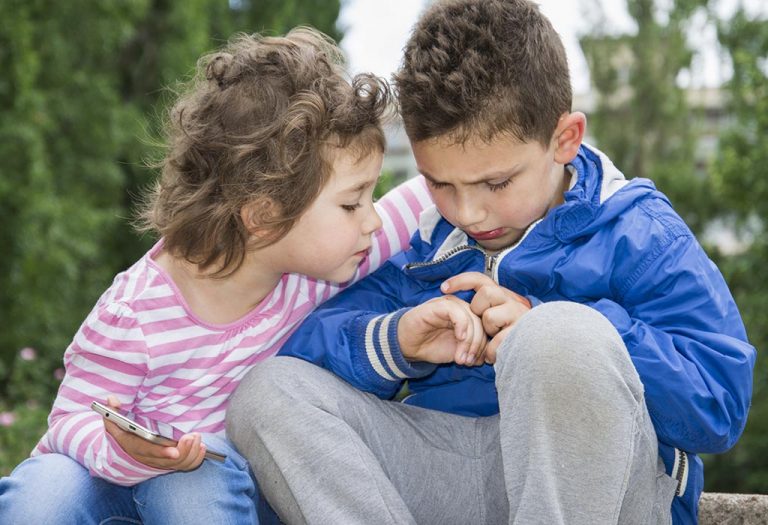How to Teach Kids to Share – 15 Effective Ways
Sometimes when friends come over, they bring along their little one as well. It will only be a matter of time when the kids start talking and interacting with one another. Now imagine this, your kid takes your friend’s kid to his room and starts sharing all his toys. Wouldn’t that be amazing? Wondering how to teach kids to share? This article is just for you!
Sharing is one of the fundamental elements of life, and your child must master it to develop kindness, appreciation, and self-respect. Sharing doesn’t only teach your kids how to be empathetic but is a valuable life lesson designed for every human being. It’s a new experience, and the more experiences your child goes through, the stronger his values become down the lane. If you’ve always wondered how to teach lessons on sharing for preschoolers, we’ve got you covered.
Why Is It Important to Teach Kids to Share?
Sharing is a fundamental life skill. When your child learns to share, he begins to understand the meaning of taking turns and giving chances. From teamwork, cooperation, and relying on partners and such, sharing develops all these aspects in their lives.
What Age Do Children Learn to Share?
Children typically begin to learn the concept of sharing between the ages of 2 and 3 years old, but mastering this skill can take time and practice (1). At this stage, toddlers start to understand the idea of taking turns and playing together, though they may still struggle with possessiveness and frustration. By the age of 4 or 5, most children develop a better grasp of sharing, especially when guided by parents, caregivers, or teachers who model and encourage cooperative behavior. However, every child is unique, and the pace at which they learn to share can vary based on their temperament, social environment, and developmental stage.
Is It Normal for a Child to Find It Difficult to Share?
Yes. At the tender age of three, children start to develop a sense of empathy. However, they cannot control the result of their impulses. Since children don’t have complete control over their impulses before the age of 5 and above, you may notice your child reluctant to share even if he does want to (2). Fret not; it’s completely natural, and you should give your little one some time. After all, these are physiological changes taking place inside him, which he doesn’t have control over at that moment.
Effective Ways to Teach a Child Sharing
Here are 15 highly effective sharing activities for kids:
- Taking Turns: Are your kids playing with the train? Tell them to take turns or share their toys (3). If they don’t share, take the toys away and let them realize the importance of sharing. This way, next time, they won’t hesitate to share and cooperate with each other instead of being selfish.
- Appreciate Them: Did you just spot your child doing a good deed by sharing a cookie with his friend or sibling? Give him some appreciation and make him feel nice. He’ll crave that response from you again and definitely share next time.
- Time It: Maybe your child faces a challenge to start sharing? Setting a timer during playdates is a great way to start things off. For example, if your child is playing with LEGOs, he’s got only 10 minutes to build whatever he likes until it’s his brother’s turns. If he wants to have another go, he’ll have to patiently wait for his turn or play with another toy in the meantime.
- Tell Them It’s Temporary: If your child throws temper tantrums over-sharing, tell them that it’s not permanent but temporary. Children don’t like sharing their most valuable possessions (and who wouldn’t?), but once they realize it’s only for a few minutes to hours until they get it back, they’ll happily oblige.
- Bond With Your Child: Children who are close to their parents are more self-secure and not reluctant to share what they have. The reason behind this is since they get enough love and affection from loved ones, they don’t feel the need to derive that love from inanimate objects or toys.
- Explain the Benefits of Sharing: Sit down with your child and explain to them the benefits of sharing. If your child doesn’t share with others, he won’t receive anything either. Once he gets this simple concept, he’ll be more than happy to share.
- Keep Away His Favourite Toys: If your child is reluctant to share his toys, ask him which ones he’d like to share. The ones he absolutely doesn’t want to, you can store them away on a shelf or somewhere else for their playdate. Once their friends leave, you can give it back to them. This will slowly help them transition to sharing more valuable things later on as they get accustomed to the act of lending lesser valuable things.
- Show Them Sharing in Real Life: Extend the concept of sharing by showering love, affection and other things in real life. Kids sharing doesn’t stop at only food or toys. Teach them to share time and precious moments with siblings, like going to the park together or going to the theatre as a family. Teach them to hug their siblings and share emotional experiences with others too.
- Use Different Words: If your child hesitates to share, you can try using words like “lending,” “borrowing”, or “getting it back after a few hours (or some time)”. This will make them feel secure and more likely to share once they are aware that they’ll get back what they share. Use words that are easy to process and understand when explaining the concept of sharing.
- Be a Role Model: Your child learns from actions more than words, which is why being a role model for sharing is important. Share a pizza slice or a sandwich with your spouse and whenever you sit down to snack, ask your little one whether he wants some of it. By demonstrating sharing with others and by giving personal examples, he’ll want to be on the fun too.
- Teach Them Charity: If there are toys your child no longer likes playing with, donate them to charity with your child’s involvement. Also, shopping for brand new toys to donate for charity is a surefire way to invoke a sense of empathy and compassion in your children. Take them on trips to orphanages and charitable institutions and encourage them to give away some of their valuables to help them realize how sharing makes the world a better place and how contributions make a difference.
- Practice, Practice: Sharing is a skill just like anything else in life, and it stands true that it needs some practice. Get your child to interact with peers of his age and make friends. By building trust in his social circles, he’ll be more appreciative of sharing and be willing to show some of their things. There’s a huge difference in sharing with strangers and friends, and they’ll get that and appreciate it for what it is.
- Create Sharing Games: Introduce fun games that require cooperation and sharing, such as building a block tower together or playing board games that involve taking turns. This makes sharing feel like a natural and enjoyable part of playtime rather than a forced activity.
- Use Stories and Books: Read books or tell stories that highlight the importance of sharing and kindness. Children often relate to characters and learn valuable lessons through storytelling, which can inspire them to share more willingly.
- Encourage Group Activities: Involve your child in group activities like art projects, team sports, or group playdates where sharing is essential. These experiences help them understand the value of collaboration and sharing in a social setting (4).
FAQs
1. What if my child only shares to avoid punishment?
If your child shares solely to avoid consequences, it’s important to focus on intrinsic motivation. Encourage them to understand how sharing makes others feel happy and how it strengthens friendships rather than framing it as a rule they must follow.
2. How do I handle sibling rivalry when teaching sharing?
Sibling rivalry can complicate sharing. To address this, create a system where each child has designated “special toys” they don’t have to share while encouraging them to share communal toys. This balance helps reduce conflicts and fosters a sense of fairness.
3. Can technology help teach sharing?
Yes, certain apps and games designed for kids can promote sharing and cooperation. Look for interactive games that require teamwork or taking turns, as these can reinforce sharing concepts in a digital format that kids enjoy.
Did you enjoy learning about sharing? Then why not share this article today and make the world a better place by spreading the joy and benefits of sharing!
References/Resources:
1. National Library of Medicine – Developmental Stages of Social Emotional Development in Children
4. Montana State University – The Importance of Play in Early Childhood Development
Also Read:
Good Manners to Teach Your Kids
Good Habits to Teach Your Children
Essential Life Lessons for Kids
Ways to Teach Your Child About Respect
Was This Article Helpful?
Parenting is a huge responsibility, for you as a caregiver, but also for us as a parenting content platform. We understand that and take our responsibility of creating credible content seriously. FirstCry Parenting articles are written and published only after extensive research using factually sound references to deliver quality content that is accurate, validated by experts, and completely reliable. To understand how we go about creating content that is credible, read our editorial policy here.






















